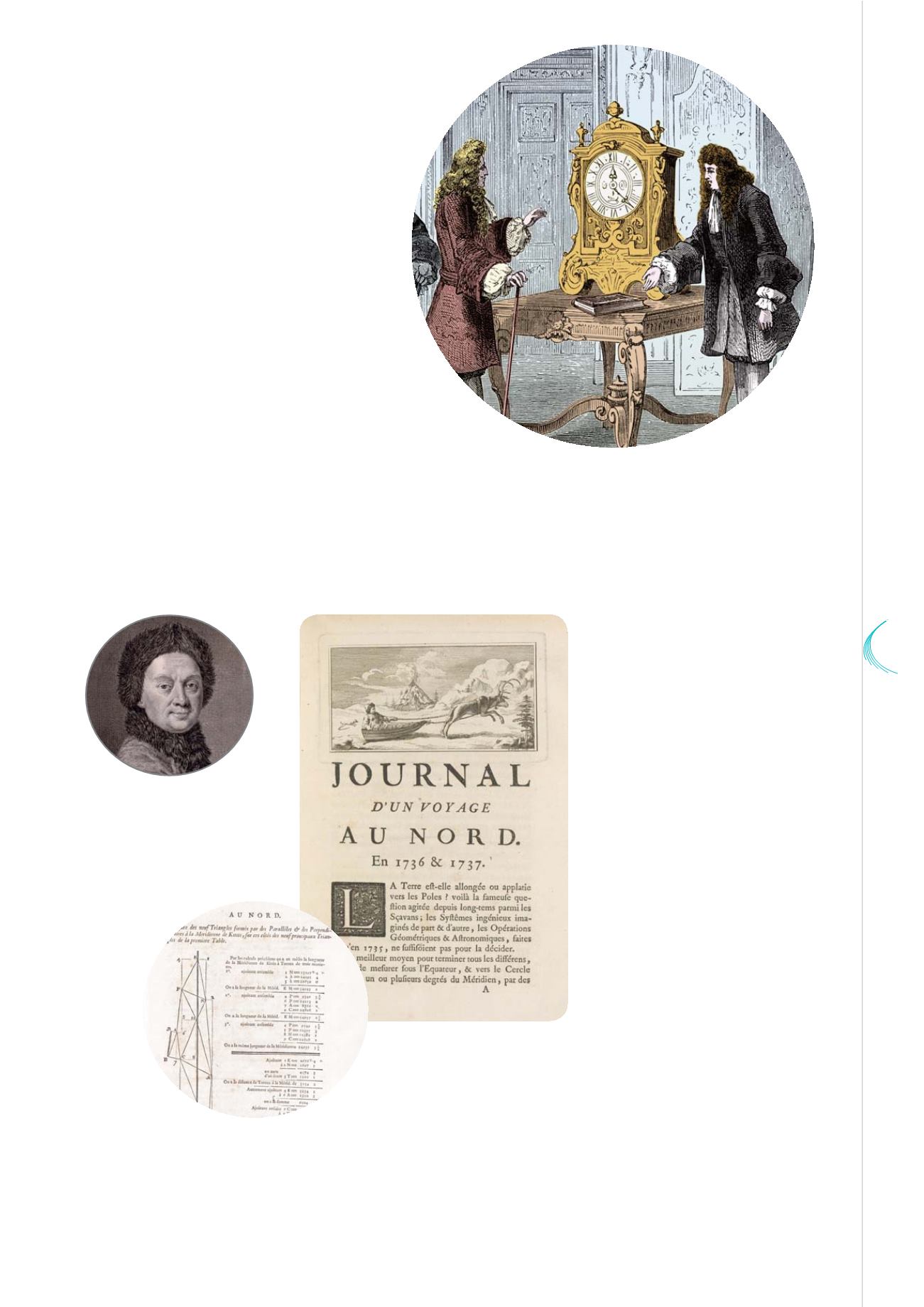

350
YEARS
OF
SCIENCE
83
© Photo Researchers, Inc - Alamy
Christiaan Huygens (1629-1695)
presents his pendulum clock to
Louis XIV.
© Archives de l'Académie
Journal of the campaign,
by the abbot Outhier and
Maupertuis, Paris, 1744
© Bibliotheque de l'Institut de France
Pierre Louis Moreau de
Maupertuis (1698-1759)
and the campaign to
Lapland
marked point on a rolling wheel. Indeed, if a
pendulum is constrained by two “cheeks” of
cycloidal shape, then the mass describes
a trajectory that is itself cycloidal; and,
remarkably, the oscillation period will
be rigorously invariant. This enabled
Huygens to build the first mechanical
precision clock, with an error inferior to
one second per hour.
However, the pendulum was far from
saying its last word. In 1673, the astronomer
Jean Richer, who had been recruited as
"élève académicien" in 1666, discovered that his
pendulum ticked a bit slower in Cayenne than in Paris.
Huygens and Newton deduced from this trivial observation that
the Earth, subject to a centrifugal force, is slightly flattened at the poles: a theory that would remain
controversial for half a Century, until a famous measurement campaign in Lapland that the Académie
des Sciences entrusted to
Maupertuis.
Thus, within this pendulum
lie the seeds of two great
scientific epics. One is the
technology
of
precision
clocks, whose most colorful
moment was Harrison’s 1765
chronometer, a real wonder
that would not lose more than
one second per month and
made it possible, through the
calculation of time difference,
to take precise bearings at
sea. The other is the discovery
of the precise shape of the
Earth, whose most dramatic
chapter was the heroic effort
Delambre et Méchain made
on the wake of the French Revolution to measure the Earth and thus provide the world with a truly
universel unit, the metre.


















